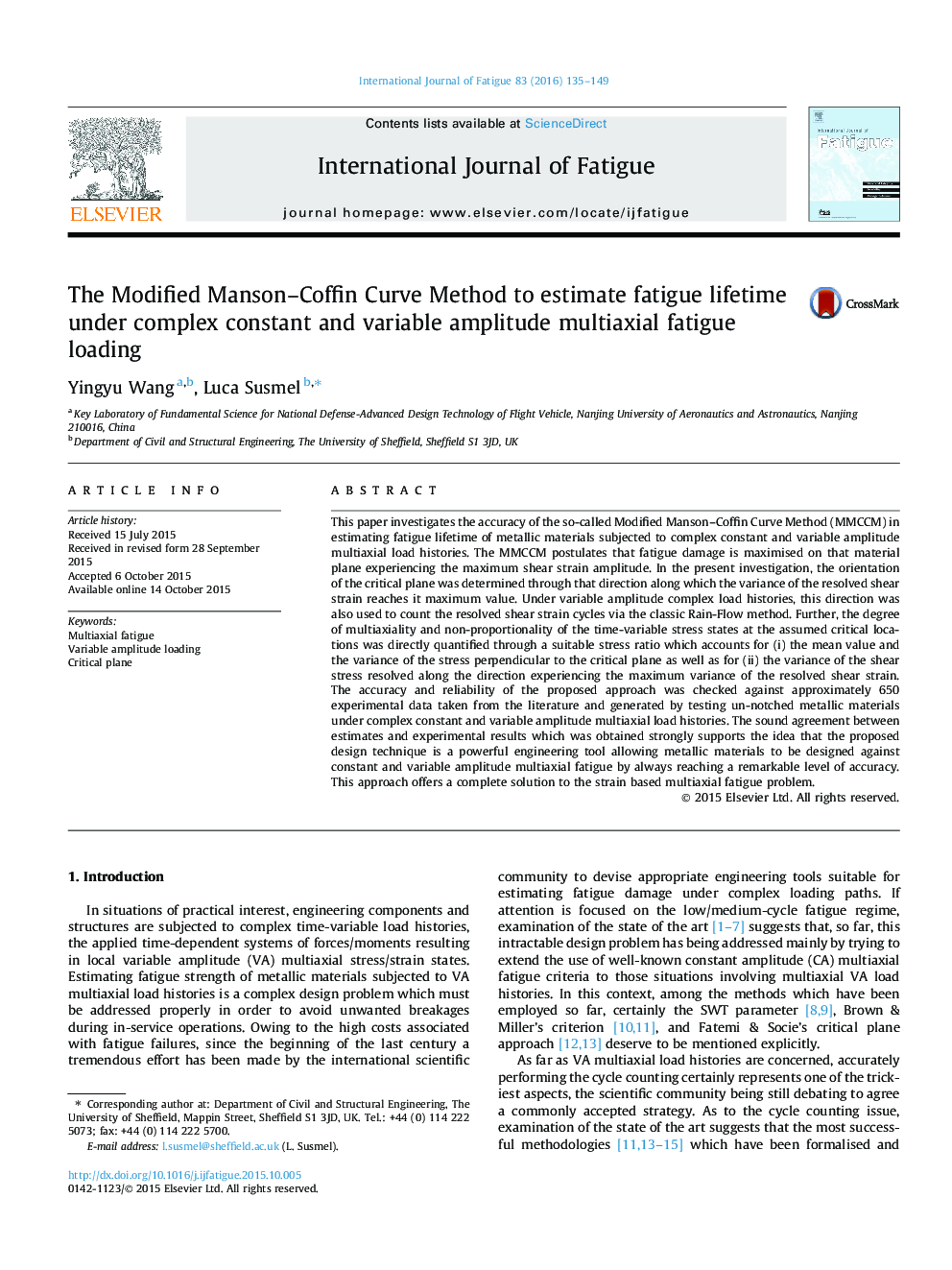| Article ID | Journal | Published Year | Pages | File Type |
|---|---|---|---|---|
| 774859 | International Journal of Fatigue | 2016 | 15 Pages |
•MMCCM is successful in predicting lifetime under CA/VA multiaxial fatigue loading.•The shear strain variance method is efficient from a computational viewpoint.•This approach offers a complete solution to the multiaxial fatigue problem.•Our approach is suitable for being used in situations of practical interest.
This paper investigates the accuracy of the so-called Modified Manson–Coffin Curve Method (MMCCM) in estimating fatigue lifetime of metallic materials subjected to complex constant and variable amplitude multiaxial load histories. The MMCCM postulates that fatigue damage is maximised on that material plane experiencing the maximum shear strain amplitude. In the present investigation, the orientation of the critical plane was determined through that direction along which the variance of the resolved shear strain reaches it maximum value. Under variable amplitude complex load histories, this direction was also used to count the resolved shear strain cycles via the classic Rain-Flow method. Further, the degree of multiaxiality and non-proportionality of the time-variable stress states at the assumed critical locations was directly quantified through a suitable stress ratio which accounts for (i) the mean value and the variance of the stress perpendicular to the critical plane as well as for (ii) the variance of the shear stress resolved along the direction experiencing the maximum variance of the resolved shear strain. The accuracy and reliability of the proposed approach was checked against approximately 650 experimental data taken from the literature and generated by testing un-notched metallic materials under complex constant and variable amplitude multiaxial load histories. The sound agreement between estimates and experimental results which was obtained strongly supports the idea that the proposed design technique is a powerful engineering tool allowing metallic materials to be designed against constant and variable amplitude multiaxial fatigue by always reaching a remarkable level of accuracy. This approach offers a complete solution to the strain based multiaxial fatigue problem.
